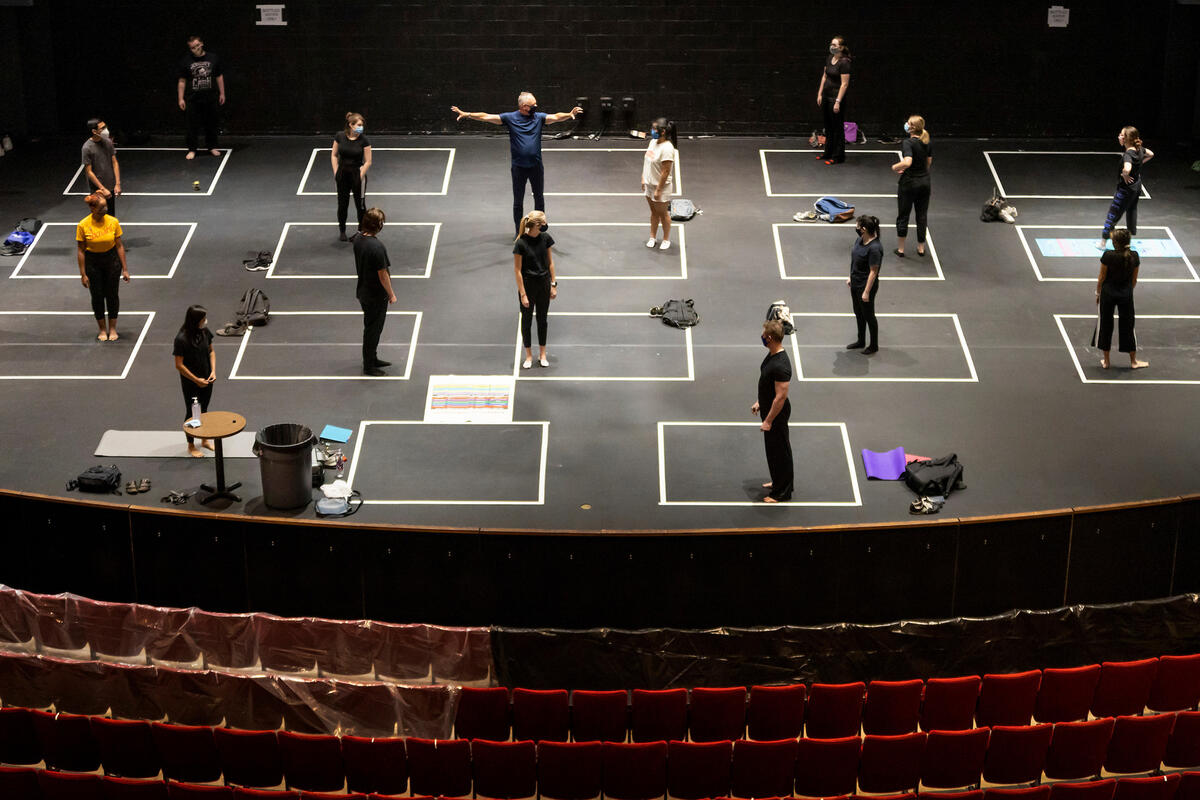Accounting classes in Hospitality Hall? Film in Beam Hall? Welcome to the weird world of fall semester 2020 at UNLV.
With classrooms capped at 50 percent capacity and no more than 50 students allowed at maximum by order of Gov. Steve Sisolak, UNLV's space coordinators had to get creative when it came to finding the right classrooms to ensure students and faculty stay safe in the 20 percent of sessions that are in person this semester.
"Like a jigsaw puzzle, there are fixed pieces, but a lot of this has just been evolving," Registrar Sam Fugazzotto said. "We had a plan but it's been evolving as we got more and more requests as summer wore on for people to teach remotely, which changed what we had planned to do for the on campus offerings."
The result is a schedule that makes extensive use of large classrooms and other facilities, even if that means courses are being taught in what might not be their natural environments.
Thomas Beam Engineering's room A-107, for example, has a maximum capacity of 175. While it will see expected engineering units, it will also host sections in criminal justice, health physics and diagnostic sciences, life sciences, mathematics, and political science. The largest classes in the room will top out at 45 students.
"This semester, all bets were off in terms of traditional placements," Fugazzotto said. "It's really been a matter of finding available space, so things got scattered around campus a little bit more. And in some cases we had to slightly shift the start time on classes too, to just try and create a little more separation so we wouldn't have a lot of students gathered in the hallway all at the same time."
It means buildings with a higher percentage of smaller classrooms, like the Flora Dungan Humanities Building, will see lighter-than-normal use.
"While there are far less courses in a building at a time, we are really kind of scattered out almost all of the buildings that traditionally have classrooms in them," said Brent Drakie, vice provost for the office of decision support. "It may just be that you only have one or two in a day in a classroom that might've had eight in a typical semester. We're dispersed about campus intentionally because we’re trying to avoid having big clusters of people together at any time."
That leads this semester to existing spaces pressed into service in new and creative ways.

Artemus W. Ham Concert Hall will host classes on stage and in the lobby, following strict guidelines on entering and exiting the building. It will only be open to students five minutes before the start of class time, and students can only enter one way and will exit through a different part of the building.
Once inside, demarcated squares are taped off and appropriately distanced for theatre students to practice their craft in the department's movement classes. Only 17 students will be on the stage at any given time, and they'll be practicing in ways that are unique.
"Historically, theater as a course of study requires close proximity to each other — especially when you're doing experimental physical techniques. It's almost more like a modern dance class, and physical contact is quite often a part of the training," assistant professor Sean Boyd said. "I think it's just going to be a matter of making sure everyone's on top of their game with respect to keeping their distance even though they've probably worked in closer proximity to each other. That's just not the way that we're going to be working for the foreseeable future."
The foreseeable future across all disciplines still calls for plentiful remote instruction, which can lead to situations where students will have a remote class shortly after an in-person class. To alleviate that kind of bottleneck, some spaces were converted to dedicated study rooms in addition to space available in the libraries and computer labs around campus. Eight study spaces are available in John S. Wright Hall and Rod Lee Bigelow Health Sciences building rooms 201 and 206 from 8 a.m. to 8 p.m.
"It's a tough situation for colleges all around. We are hopeful that what we have put in place will help," Drake said. "We're trying to prevent large spreads or creating some kind of hot spot, and try to make the best of it."



